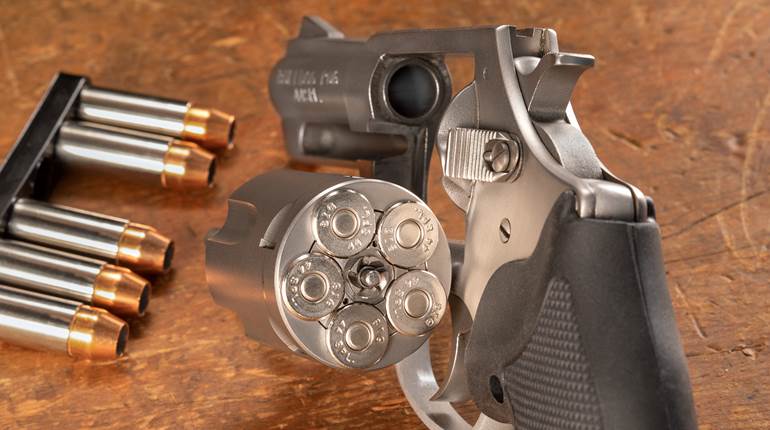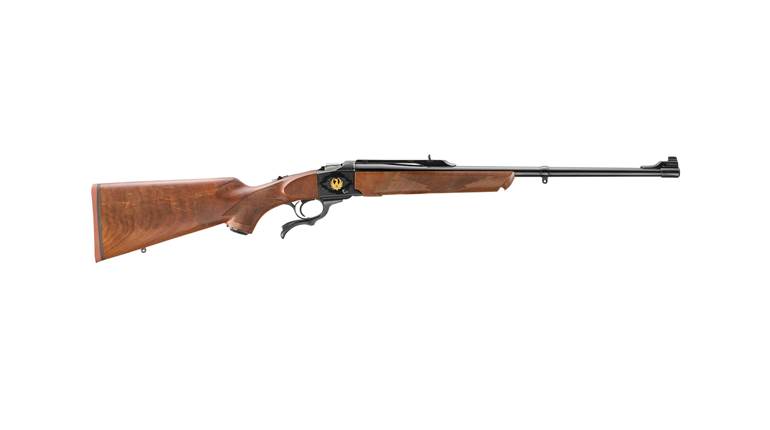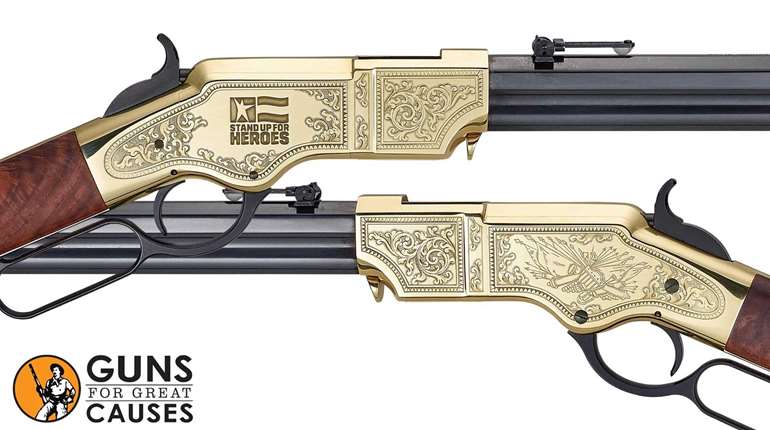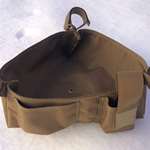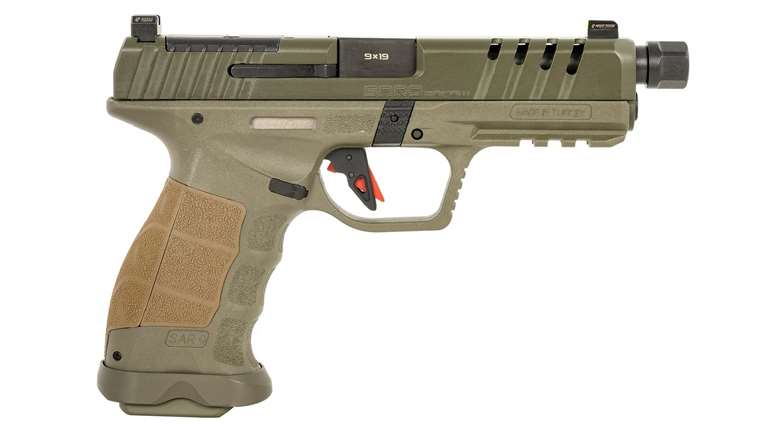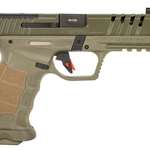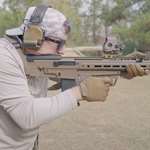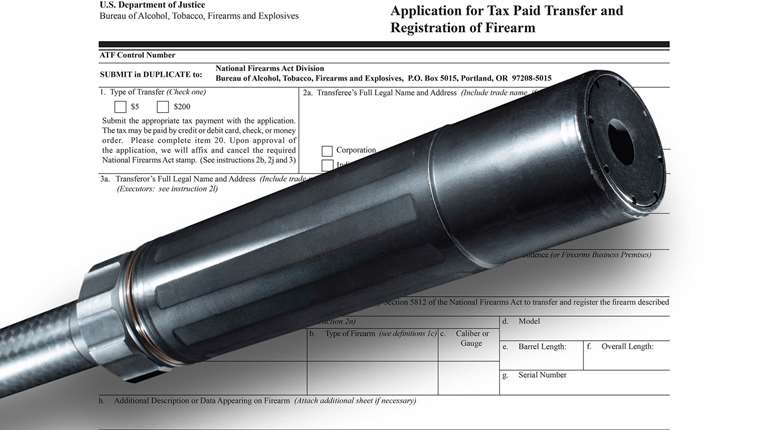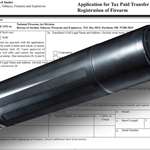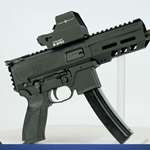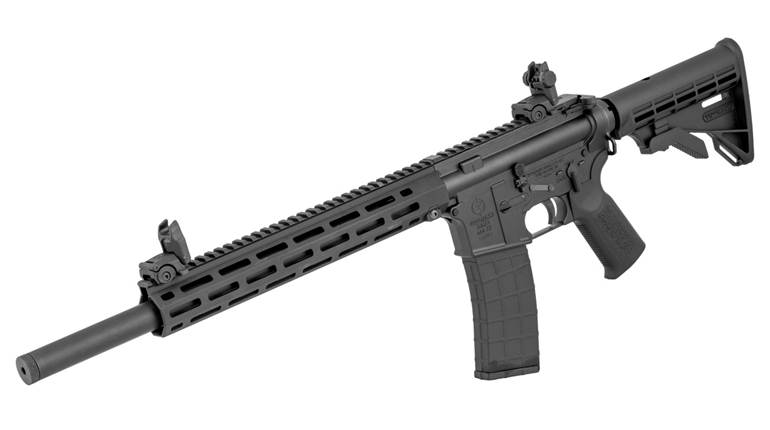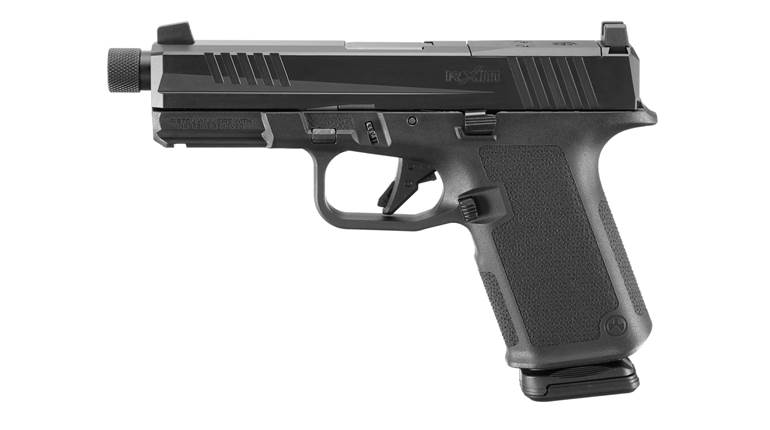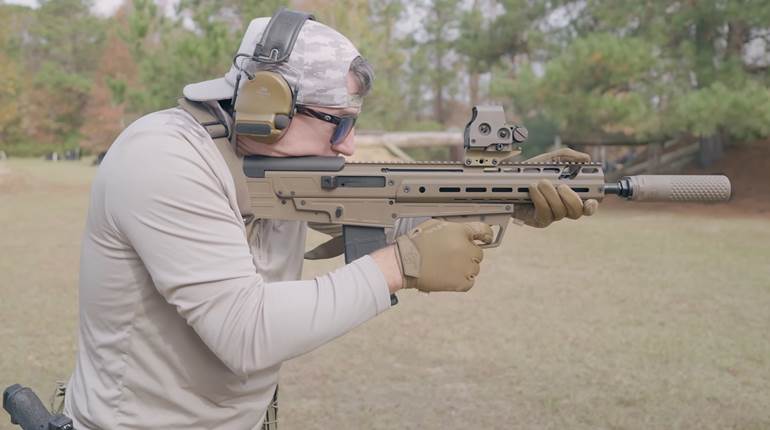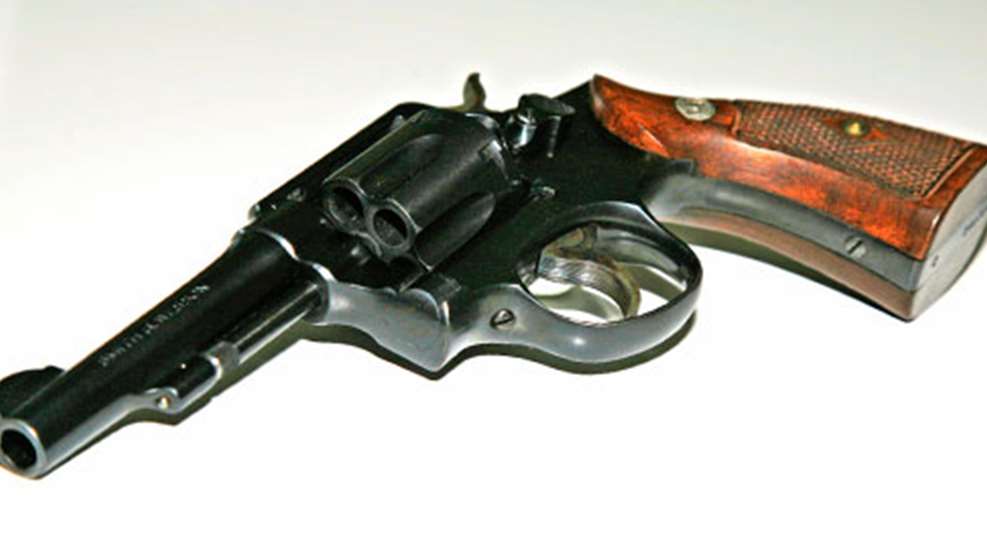
On the cusp of the 20th century, the Wild West had largely been won. Smokeless powder was muscling blackpowder out of many cartridges, and the trend for shooters was toward smaller, lighter bullets at relatively high velocity. Trigger-cocking revolvers—a.k.a. double actions—had been introduced and were quite popular. Most were top-breaks, which meant that they could not be chambered for a powerful cartridge without being made uncomfortably large and heavy. Smith & Wesson pioneered the concept of a solid-frame revolver with a cylinder that swung left out of the frame for loading and unloading. Called the Hand Ejector, the I-frame .32 H.E. Model of 1896 was the first on the market and is now known as the .32 Hand Ejector First Model. Four years later, the company introduced a larger, .38-caliber frame Hand Ejector Model with an improved cylinder lock that restrained the cylinder from moving during firing with a locking bolt on the bottom of the cylinder, rather than on top of the cylinder as with the original design.
The K-frame, as this .38-caliber frame was called, was at first designed around the .38 United States Service cartridge—better known as the .38 Long Colt. However, the cartridge garnered a reputation as a poor manstopper. Aging company patriarch D.B. Wesson thought that it would fare better if the cartridge case was lengthened enough to increase the charge to 21 1/2 grains of propelant from the 18-grain charge of the service cartridge and the bullet weight increased from 150 to 158 grains. It did, and the new cartridge was christened as the .38 S&W Spl. while the gun that fired it became the .38 Hand Ejector Military & Police. Likely, few, if any, could even dream of the impact this revolver and its new cartridge would have on people who choose to carry or must carry a gun, to say nothing of its influence on the success of the company.
For more than a century the Military & Police .38 Spl.—it received the Model 10 nomenclature when Smith & Wesson started the numbering system in 1957—has been the backbone of the company. While the M&P may not be blessed with all the glamour of some of the other revolvers made by Smith & Wesson—the .357 Mag., Triple Lock, .44 Mag. and the relatively new .460 and .500 magnums—versions of this revolver have been used all over the world by both law enforcement and the military. This basic, workaday revolver has spawned dozens of variants ranging from sophisticated target guns to rimfire trainers and small-game guns to compact, powerful magnums. The Masterpiece series began with the K-38 and K-22 revolvers, and these are some of the most sought after examples by collectors of fine handguns.
The earliest .38 M&P HE revolvers featured a round butt and no underlug on the barrel. Available barrel lengths were 4, 5, 6, 6 1/2, and 8 inches. The metalwork was either blue or nickel. For a while, Smith & Wesson made the same revolver in .32-20 WCF, but sales were lackluster and production eventually ceased for this caliber in 1939. Examples of the .32-20 have sold for about the same as its .38-caliber brother, but if you find one NIB (new, in box) expect to pay about a 75-percent premium over the .38.
All are marked caliber .38 S&W; military service revolvers have smooth grips with no medallion while commercial versions have checkered grips with the S&W medallion. Serial numbers higher than 1,000,000 have a V prefix (for the Victory model). Early examples have UNITED SATES PROPERTY or U.S. Property stamped on the topstrap. Sideplates often marked with "G.H.D." or "W.B." inspectors' mark. Those with the new style hammer block—introduced in 1944—have "SV" prefix to indicate the change.
Target shooters clamored for a square butt to aid in control, and this option became available in 1904. This change was the last major change personally approved by D.B. Wesson before his death in 1906, according to Roy Jinks, renowned Smith & Wesson authority and collector, and author of the definitive book “History of Smith & Wesson.” At any rate, the square butt configuration became so popular that it became the standard configuration for the entire K-frame line.
Throughout the beginning of the 20th century several changes were made on the .38 M&P HE, nomenclature was identified and numerous spin-offs of this platform from rimfires to magnums and beyond were developed. The scope and depth of these changes and spin-offs are beyond what we can go into here, but for those with a thirst for minutiae, Jinks devotes a chapter to the K-frame and its variants in his book. However, because of its impact on history, one of those variants deserves mention here.
In March of 1940, Smith & Wesson began manufacturing revolvers for Great Britain as it entered World War II. However, this M&P HE revolver was chambered for the .38 S&W cartridge. This cartridge, developed in the 1870s, is not interchangeable with the .38 Spl. Its case is some .006-inch larger in diameter, and the bullet measures approximately .361 inch. Commonly referred to as the .38-200 because of its 200-grain bullet, it was considered a fairly effective self-defense cartridge. The company produced 568,204 British Service revolvers from 1940 until 1945. It used to be common to see these at gun shows or in the used gun section of gun stores, but I haven’t seen one in several years.
During the waning years of World War II , a new hammer block device was incorporated that is virtually foolproof. After the war, a short hammer throw designed for a faster lock time on target guns replaced the old “humpback” hammer. March 1948 marked the 2 million production milestone for the M&P revolver. That is when a new series with a C Prefix on the serial number began. My own M&P is from the early part of this run.
This gun came to me from the man who introduced me to shooting, and it happens to be the first center-fire handgun I shot. When Gene passed away tragically in a auto accident 12 years ago, his widow insisted that I get this revolver and his Winchester Model 12 shotgun. As a teenager, I would head into one of the canyons on the outskirts of Los Angeles with Gene where he would teach me about shooting. Today, if someone wanted to do some recreational shooting in these Forest Service canyons, it would elicit a SWAT Team response. It isn’t a gun I carry or shoot much at all, but it is one of my treasures simply because it was the first “big” handgun I got to shoot.
One hundred eleven years after its debut, the M&P HE revolver—now called the Model 10—remains in the line as part of the Classic series. Today’s Model 10 is a round-butt, 4-inch bull-barreled .38 Spl. that is as sturdy and reliable as the millions of its predecessors. It’s still nothing fancy, and there are plenty of guns in Smith & Wesson’s line that garner more attention, but it remains an excellent no-nonsense choice for self-defense, especially for the “non-gunny.”













